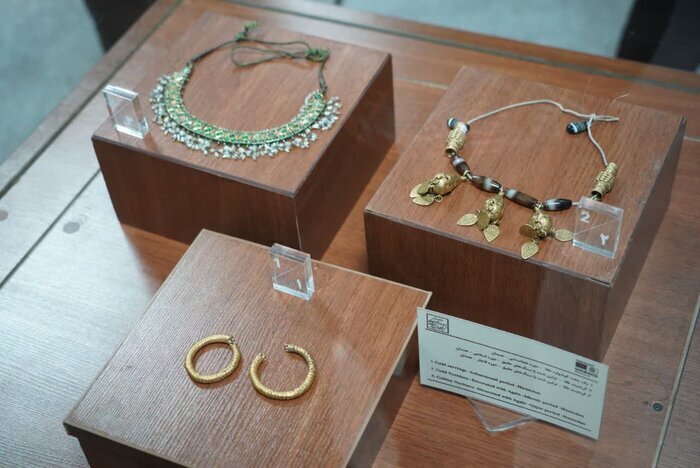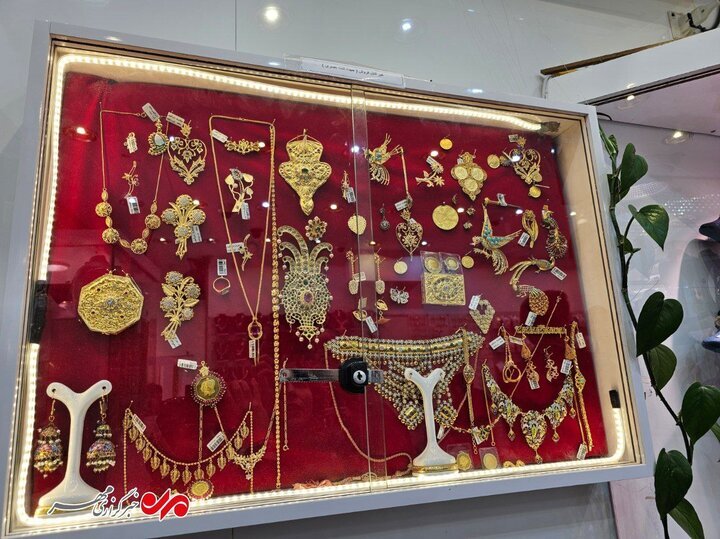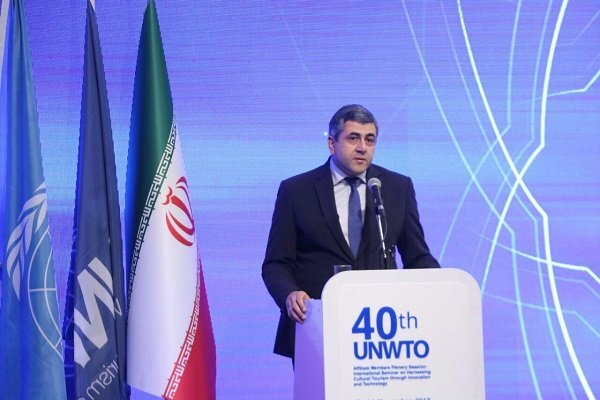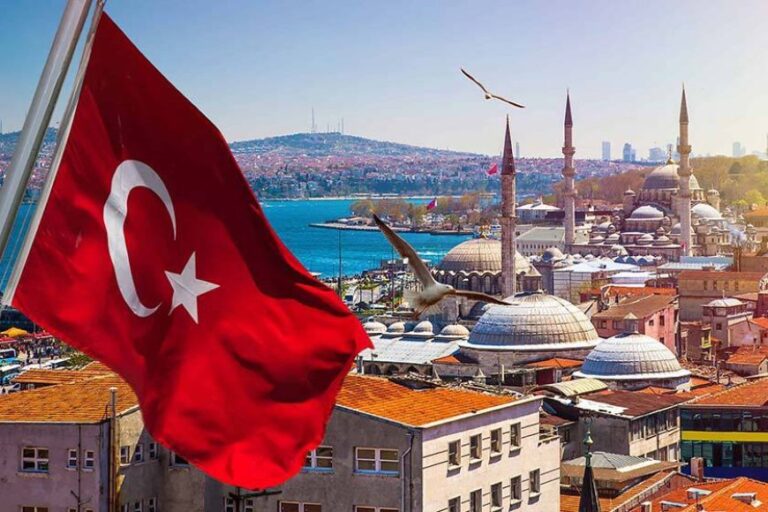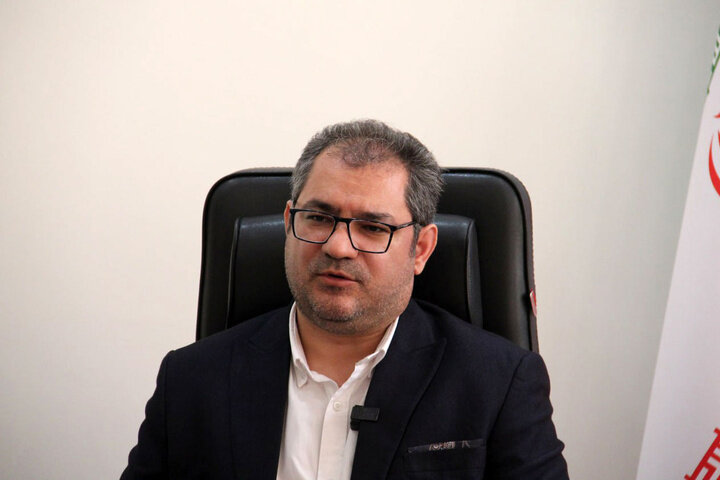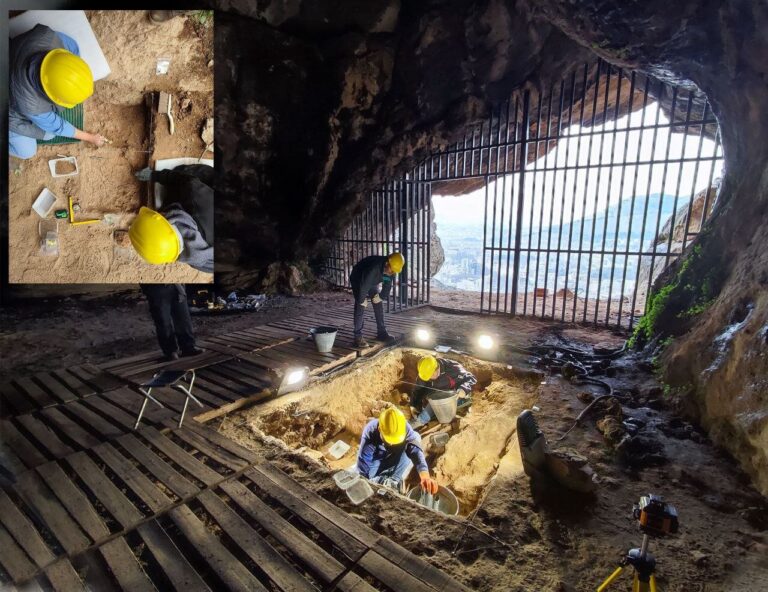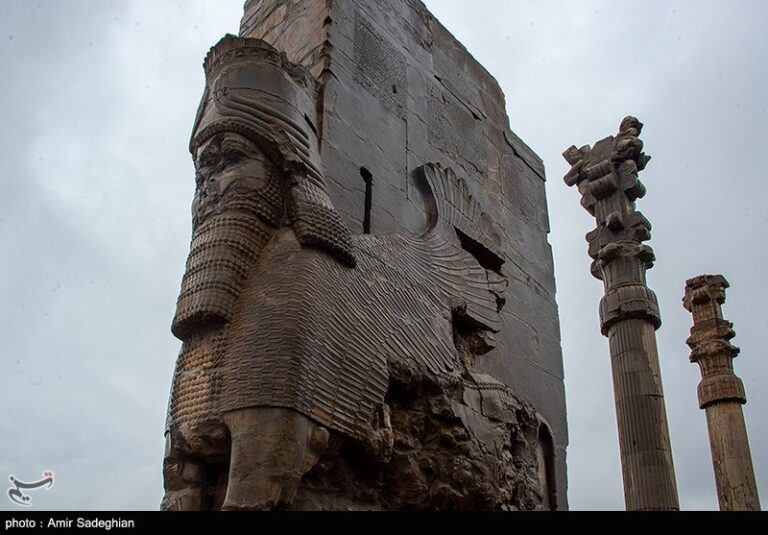Hegmataneh Museum Showcases Stunning Golden Artifacts in Celebration of International Museum Day!
In celebration of International Museum Day, the Hegmataneh Museum in Hamedan province has unveiled three exquisite golden artifacts. This event provides visitors with a rare opportunity to explore Iran’s rich cultural heritage that spans thousands of years.
The unveiling ceremony took place on Saturday, guided by the provincial tourism chief, Mohsen Masoum-Alizadeh, under the global theme: “Museums for a Sustainable Future.” The artifacts featured included:
- A gold earring from the Achaemenid era
- A gold bracelet inlaid with agate stones from the early Islamic period
- A gold necklace adorned with agate stones from the Qajar era
All three remarkable pieces were discovered in the Hamedan region and are being exhibited to the public for the first time under the captivating title “Gold and Time: Golden Narratives from Iran’s History.”
Masoum-Alizadeh noted, “These artifacts are not only artistic masterpieces but also powerful historical documents that reflect the deep cultural and historical roots of Hegmataneh.” He emphasized their importance in preserving the identity of this ancient city.
Hegmataneh, also known as Ecbatana, is a UNESCO-registered site and one of Iran’s most storied ancient cities. It is renowned for its archaeological and cultural significance, dating back to the Median Empire.
During the ceremony, Masoum-Alizadeh also announced progress on the establishment of the West Iran Regional Museum, which will showcase further archaeological discoveries from the broader region. This initiative aims to enhance public access to Iran’s historical treasures.
The unveiling ceremony marked the beginning of Iran’s Cultural Heritage Week, which seeks to promote public appreciation for the country’s diverse historical legacy through various exhibitions, events, and educational programs.
Located in the suburban area of modern Hamadan, Hegmataneh spans approximately 50 acres. Its rich archaeological deposits provide a glimpse into millennia of human civilization. Despite its vast historical significance, large portions of the site remain unexplored, promising future discoveries that could further illuminate our understanding of ancient Iran.
Hegmataneh is universally celebrated as the site where the Median Dynasty was first established. It served as the capital of the powerful Median Empire, later evolving into a significant center for the Achaemenid Empire, one of history’s most influential empires.
The city’s historical significance is enhanced by its role during subsequent periods, including the Seleucid, Parthian, Sassanid, and Islamic eras. Each era has left its mark on Hegmataneh, contributing to a vibrant tapestry of cultural evolution.
This archaeological site is a treasure trove for historians and archaeologists alike. It houses an impressive array of remains from various dynasties, including the Medes, Achaemenid, Parthian, Sassanid, and Islamic periods, particularly the Buyid dynasty. While the majority of the remains belong to the Parthian era, the site also features urban architectural systems recognized as masterpieces of their time.
The unveiling of these golden artifacts not only highlights the artistic craftsmanship of ancient Iran but also serves as a reminder of the importance of preserving cultural heritage. The Hegmataneh Museum stands as a beacon for those interested in the rich historical narratives that shape the identity of Iran.
As visitors explore the exhibition, they are encouraged to appreciate the intricate details and historical significance of each artifact. The connection between the past and present is evident, as these objects tell stories of civilizations long gone yet still resonate in today’s world.
In conclusion, the Hegmataneh Museum’s unveiling of these golden artifacts is a significant step in celebrating Iran’s cultural heritage. It invites everyone to delve into the rich history that these treasures represent and encourages ongoing exploration and preservation of the ancient narratives that continue to shape our understanding of human civilization.
